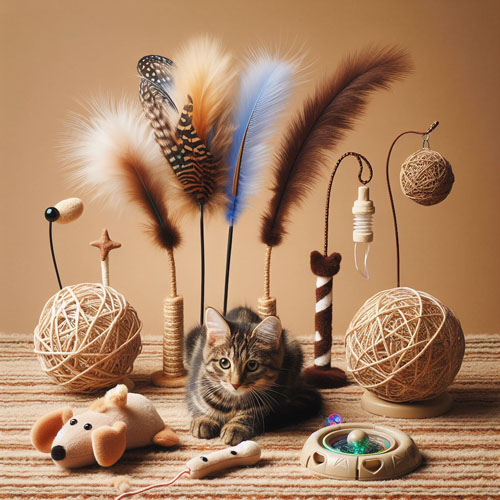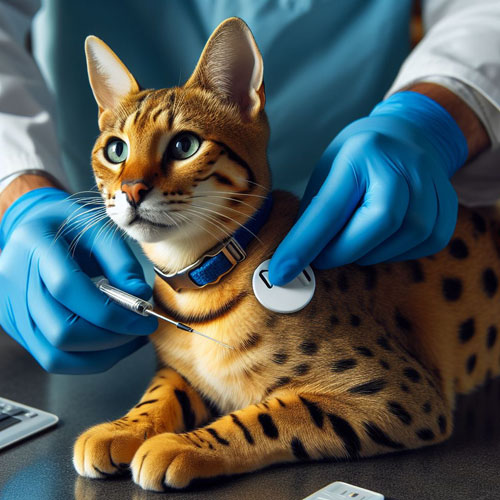Savannah Cat Nail Clipping
Savannah Cat Nail Clipping: A Guide to Precision and Timing
As a proud owner of a Savannah cat, navigating the territory of grooming is an essential aspect of responsible pet care. Among the various grooming tasks, nail clipping stands out as a crucial yet potentially challenging endeavor. Savannah cats, known for their unique hybrid nature and distinctive traits, require careful attention when it comes to maintaining their claws. In this comprehensive guide, we delve into the intricacies of Savannah cat nail clipping, exploring the techniques for precision, the significance of timing, and the art of fostering a positive experience for both the feline and the owner.
Understanding Savannah Cat Claws: Before embarking on the journey of nail clipping, it’s imperative to understand the anatomy and function of Savannah cat claws. These hybrid felines possess retractable claws, a characteristic inherited from their serval ancestors. The retractable nature of the claws serves multiple purposes, including climbing, hunting, and self-defense. Recognizing the significance of claws in a Savannah cat’s life informs the approach to nail clipping, emphasizing the need for a gentle and considerate technique.
Tools for the Task: Equipping yourself with the right tools is the first step toward successful nail clipping. Invest in high-quality cat nail clippers that are specifically designed for precision and ease of use. Additionally, having styptic powder on hand is advisable in case of accidental cuts, ensuring a swift response to any minor bleeding that may occur.
Creating a Positive Environment: Establishing a positive environment for nail clipping is essential for both the Savannah cat and the owner. Begin by introducing the cat to the concept of having its paws touched from an early age. Gradual desensitization through gentle handling and positive reinforcement, such as treats or affection, creates a positive association with the grooming process.
Timing Is Key: Determining the right time for nail clipping plays a crucial role in the overall success of the task. Observing the cat’s behavior provides insights into optimal timing. Choose a time when the Savannah cat is relaxed and calm, avoiding moments of playfulness or agitation. Incorporating nail clipping into a routine, such as after a meal or during a grooming session, helps establish a predictable schedule.
Step-by-Step Nail Clipping Technique:
- Prepare the Tools: Ensure that the cat nail clippers are clean, sharp, and in good condition. Have styptic powder within reach in case it is needed.
- Create a Calm Atmosphere: Choose a quiet and comfortable space for the nail-clipping session. Minimize distractions and ensure that the cat feels secure in the chosen environment.
- Gentle Handling: Begin by gently handling the cat’s paws, allowing it to become accustomed to the sensation. Gradually progress to touching and applying gentle pressure to the claws.
- Inspect the Claws: Before clipping, inspect the claws for any signs of damage, splitting, or redness. Identifying potential issues beforehand helps tailor the approach to each claw.
- Identify the Quick: The quick is the pinkish area within the claw that contains blood vessels and nerves. Carefully identify the quick, as cutting into it can cause discomfort and bleeding.
- Precision Clipping: Position the cat nail clippers at a 45-degree angle to the claw, avoiding the quick. Trim the tip of the claw in a smooth, controlled motion. It’s advisable to start with a small portion and gradually trim more if needed.
- Focus on Front and Back Claws: Pay attention to both the front and back claws during the nail clipping session. The back claws may require less frequent trimming than the front claws.
- Reward and Affection: Immediately after each successful nail clipping, reward the Savannah cat with treats and affection. Positive reinforcement reinforces the positive association with the grooming process.
- Monitor for Bleeding: After each clip, observe for any signs of bleeding. If bleeding occurs, apply styptic powder to the affected claw to stop the bleeding. Remain calm and reassure the cat to minimize stress.
Frequency of Nail Clipping: The frequency of nail clipping for Savannah cats varies based on individual factors such as age, activity level, and the environment. Generally, it is recommended to trim the front claws every 2 to 4 weeks and the back claws less frequently. Regular monitoring of claw length and condition helps determine the appropriate interval for nail clipping.
Common Challenges and Solutions: While nail clipping can be a routine task, some challenges may arise. The reluctance of the Savannah cat to cooperate, fear of the clipping process, or difficulty in identifying the quick are common issues. Patience, gradual desensitization, and seeking assistance from a second person if needed can address these challenges.
Professional Grooming Assistance: For cat owners who may find nail clipping challenging or prefer professional assistance, seeking the services of a veterinary groomer is a viable option. Professional groomers have experience in handling different cat breeds, including Savannah cats, and can ensure a stress-free and precise nail-clipping experience.
Conclusion: Savannah cat nail clipping is a task that requires a blend of technique, timing, and a patient approach. By understanding the unique characteristics of Savannah cat claws, preparing the right tools, and creating a positive grooming environment, owners can foster a positive experience for both themselves and their feline companions. With consistency, patience, and a commitment to maintaining claw health, the nail clipping ritual can become a routine that strengthens the bond between the Savannah cat and its owner, ensuring a lifetime of happy and healthy paws.
Keywords: Savannah cat nail clipping, Grooming techniques, Cat grooming tools, Positive reinforcement, Nail clipping frequency, Quick identification, Professional grooming, Claw health





